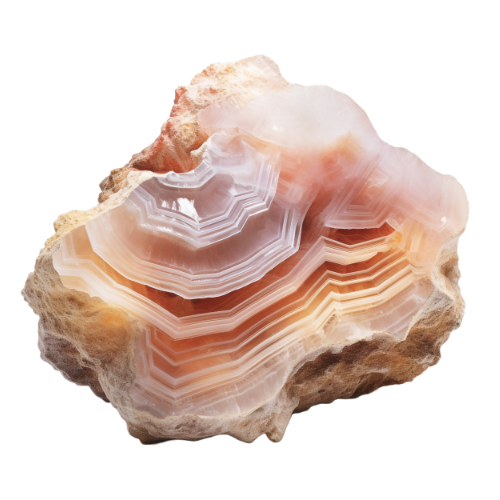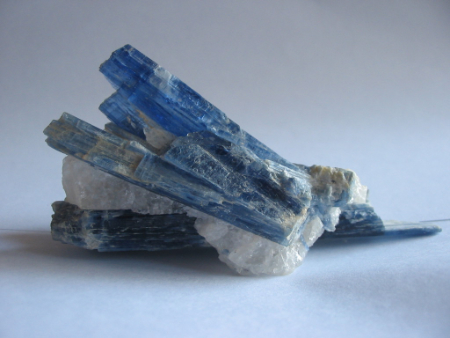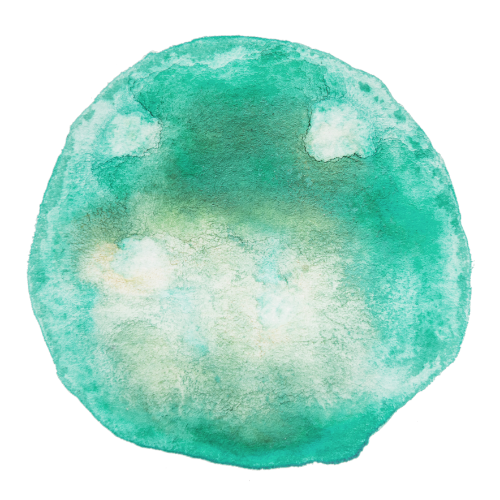
Rhodochrosite is a manganese carbonate mineral with chemical composition MnCO3. In its pure form (rare), it is typically a rose-red colour, but it can also be shades of pink to pale brown. It streaks white, and its Mohs hardness varies between 3.5 and 4.5. Its specific gravity is between 3.45 and 3.6. The crystal system of rhodochrosite is trigonal, with a structure and cleavage in the carbonate rhombohedral system. The carbonate ions (CO2−3) are arranged in a triangular planar configuration, and the manganese ions (Mn2+) are surrounded by six oxygen ions in an octahedral arrangement. The MnO6 octahedra and CO3 triangles are linked together to form a three-dimensional structure. Crystal twinning is often present. It can be confused with the manganese silicate rhodonite, but is distinctly softer. Rhodochrosite is formed by the oxidation of manganese ore, and is found in South Africa, China, and the Americas. It is one of the national symbols of Argentina and the state of Colorado.
Rhodochrosite forms a complete solid solution series with iron carbonate (siderite). Calcium (as well as magnesium and zinc, to a limited extent) frequently substitutes for manganese in the structure, leading to lighter shades of red and pink, depending on the degree of substitution. This is the reason for the rose color of rhodochrosite. [1}
Many people also wear rhodochrosite crystal jewelry or carry a small piece with them throughout the day to benefit from its healing and grounding properties. No matter how you choose to incorporate rhodochrosite into your life, this crystal is sure to enhance your well-being and spiritual journey.
In My Shop
Argentine Rhodochrosite Earrings
These Argentine Rhodochrosite Earrings are composed of Pink Argentine Rhodochrosite Beads, gold plated spacer beads and earring components
2 in stock







